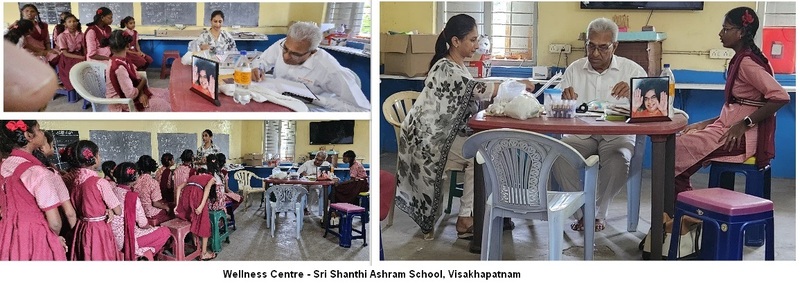In Addition
Vol 15 Issue 4
July / August 2024
1. Health Tips
Maintain Brain health to realise its amazing potential!
“All scientific investigations are based upon the intellect. All spiritual explorations are based on the heart (or the consciousness). In the spiritual field, man alone is supremely important, not the machines. Scientists put their faith in machines…Put your faith in the natural brain. Even the computer is operated by the human brain”…Sathya Sai Baba1
1. A peep into our Awesome Brain!
The crown jewel of the human body, brain is the centre of the body’s nervous system which is a network of nerve cells or neurons that helps all parts of the body to communicate with one another. It is supported by the spinal cord that extends from the lower brain to lower back, and sends motor commands from the brain to the peripheral body and relays information from the sensory organs 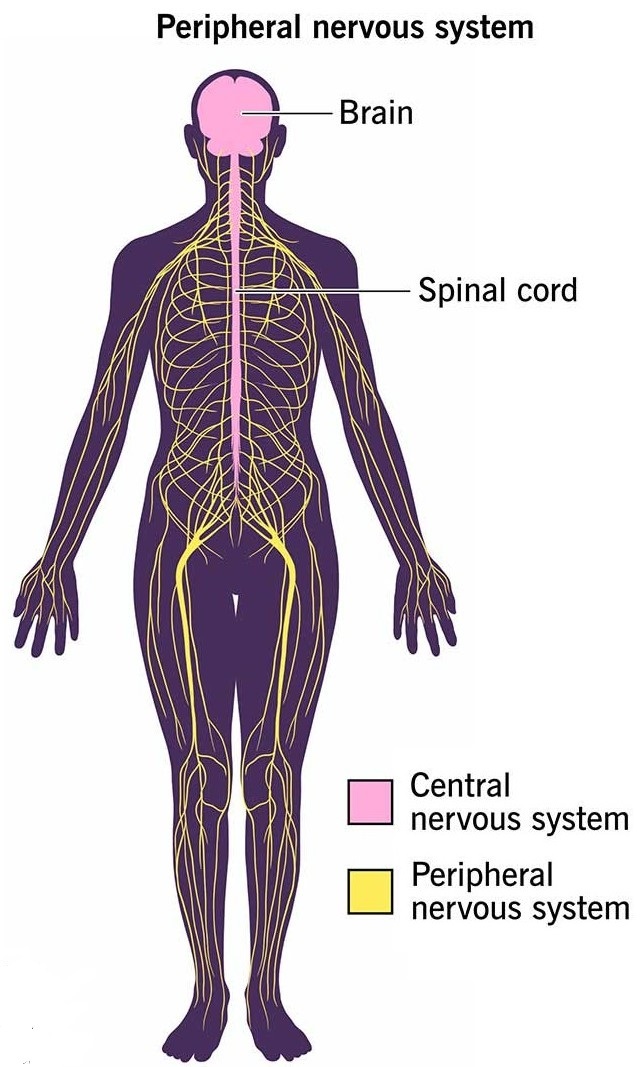 to the brain. The peripheral nervous system, a network of nerves (cranial 12 pairs and spinal 31pairs) which branch out from the brain and spinal cord, controls the voluntary as well as the involuntary functions. The brain is protected by different bones of the skull including the cranium and the cerebrospinal fluid that cushions the vital nervous system organs.2-5
to the brain. The peripheral nervous system, a network of nerves (cranial 12 pairs and spinal 31pairs) which branch out from the brain and spinal cord, controls the voluntary as well as the involuntary functions. The brain is protected by different bones of the skull including the cranium and the cerebrospinal fluid that cushions the vital nervous system organs.2-5
The three-pound (1.4kg approx) adult brain is a super computer, the seat of intelligence, very adaptable, with ability to rewire itself. Its various parts operate like a group of experts with special responsibilities but work in unison, the three main sections being cerebrum, cerebellum, and brainstem. Cerebrum is at the top of the highly developed fore-brain that takes care of every thought and action, the five senses, language, behaviour and personality, movements, learning, and reasoning. It holds our memories and allows us to plan, think, imagine, recognize friends, read, and play games. The outer surface of the cerebrum (cerebral cortex), looking like a shelled walnut, processes information. It is often referred to as the “gray matter” as nerves in this area lack insulation making other parts of the brain look white. It is split lengthwise by a deep fissure into two halves called hemispheres, having four lobes each. The left half with ability to form words controls the right side of the body, and the right half with abstract reasoning skills controls the left side of the body. When one side of the brain is damaged, the other side of the body is affected eg, a stroke in the right hemisphere of brain will paralyse the left arm and leg and vice versa.2,4-7
Cerebrum also includes endocrine glands: thalamus works like a relay station except for smell that bypasses it, and the 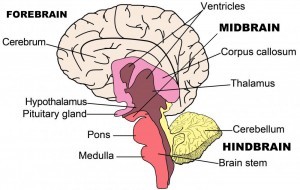
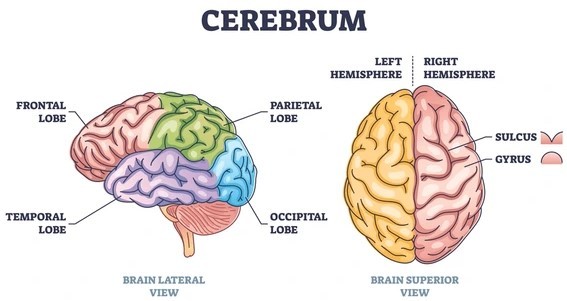 hypothalamus controls the nervous and the endocrine systems and manages the body’s temperature, heart rate, and BP. Below hypothalamus, behind the bridge of the nose, is a pea-shaped pituitary gland (master gland) that monitors and regulates the functions of several organs and hormones essential for growth and reproductive development. The hind brain contains a tiny ball tissue cerebellum or “the little brain” to take care of the vital body balance and movements. The mid brain ensures motor control, especially eye movements, and houses the tiny pineal gland to regulate our circadian rhythm, the body’s internal clock of day and night. The brain stem at the bottom of the brain and back of the skull includes both the mid brain and the medulla (the crossover-point for movement-related nerves) and controls the involuntary body functions like breathing, blinking, swallowing, and cardiovascular reflexes like heart beat and blood pressure.2,6-12
hypothalamus controls the nervous and the endocrine systems and manages the body’s temperature, heart rate, and BP. Below hypothalamus, behind the bridge of the nose, is a pea-shaped pituitary gland (master gland) that monitors and regulates the functions of several organs and hormones essential for growth and reproductive development. The hind brain contains a tiny ball tissue cerebellum or “the little brain” to take care of the vital body balance and movements. The mid brain ensures motor control, especially eye movements, and houses the tiny pineal gland to regulate our circadian rhythm, the body’s internal clock of day and night. The brain stem at the bottom of the brain and back of the skull includes both the mid brain and the medulla (the crossover-point for movement-related nerves) and controls the involuntary body functions like breathing, blinking, swallowing, and cardiovascular reflexes like heart beat and blood pressure.2,6-12
The brain is one of the hardest working organs in the body. When healthy, it can function quickly and automatically. When problems occur, the results can be devastating.2,13
2. Brain disorders
There are many kinds of brain disorder, some well-known ones are covered here. Each person’s brain is unique; same condition can affect two people differently and their symptoms can vary.13,14
2.1 Dementia: Not exactly a disease, this term covers progressive symptoms of loss of memory and skills interfering with one’s daily life. It is different from the age-related forgetfulness; here, 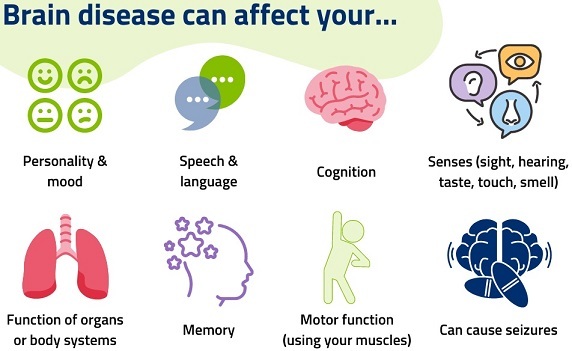 abnormal changes happen in the brain. It is most common in Alzheimer patients; also, caused by bleeding or blood vessel blockage in the brain or other diseases. Cognitive problems caused by thyroid disorder or vitamin deficiency are not dementia.13-20
abnormal changes happen in the brain. It is most common in Alzheimer patients; also, caused by bleeding or blood vessel blockage in the brain or other diseases. Cognitive problems caused by thyroid disorder or vitamin deficiency are not dementia.13-20
2.2 Alzheimer’s disease: It is a specific brain disease where cells get damaged due to excessive deposit of certain proteins in and around brain cells. It first impacts part of the brain associated with learning and memory, the early signs of dementia being, forgetting recent events, appointments, and conversations. It progresses to gradual decline in memory, thinking, behaviour and social skills, and loss of ability to do everyday tasks like keeping track of one’s wallet or purse, paying bills, planning or preparing meals. Patients will repeat statements and questions over and over, get lost in places they used to know well, misplace or put items in odd places, will not find right words for any object or express a thought, eventually forgetting the names of family members and every-day objects. In advanced stages it can lead to dehydration, malnutrition, infection, and death.13-20
2.3 Parkinson’s disease: It is caused by damage to specific neurons in the brain that produce dopamine and help coordination and precise control of muscle movements. Symptoms often start with tremors and include slowed movements, stiffness of limbs, trembling or shaking, balance problems, shuffling steps, and hunched posture.6,13,14,21
2.4 Other neurodegenerative disorders are: Motor Neuron Disease (MND) where neurons that control movement die and muscle control is lost leading to weakness and later paralysis. In Multiple sclerosis (MS), myelin sheath around nerves that relay signals get damaged; symptoms are tingling, numbness, pain, muscle spasms, weakness and paralysis, coordination issues, and fatigue. Neuralgia is characterised by intense, distinct, and sudden episodes of shooting or stabbing pain, persistent aching or burning pain, tingling or numbness, involuntary muscle twitching or cramping. It can attack the face (trigeminal, common in people with MS), hands, feet, arms and legs (peripheral), and rarely other parts of the body. Muscular dystrophy is a rare genetic neuromuscular disease, the main symptom being muscle weakness and loss that worsens over time; other symptoms include irregular walking gait, muscle pain, trouble swallowing, learning disorder, and fatigue.13,14,22-25
2.5 Stroke is brain’s equivalent of a heart attack. It occurs in two major ways: when a clot interrupts blood flow to the brain (ischaemic) or a blood vessel breaks and bleeding occurs in brain (haemorrhage). Symptoms are drooping of mouth, slurred or loss of speech, inability to lift arms or legs, loss of vision, balance, or consciousness, or inexplicable severe headache. Immediate medical attention is critical to prevent permanent damage or death, see para 3 and pic.13,26
2.6 Paralysis is inability to make voluntary movements when something disrupts nerve signals to muscles. It can affect one limb (monoplegia), one side (hemiplegia) or both sides of the body (diplegia); paraplegia involves both legs, and quadriplegia affects all the limbs. It is normally caused by stroke, spinal cord injuries, or nerve disorders. Bell’s palsy, caused mostly by a virus (often herpes simplex) results in temporary facial paralysis. Cerebral palsy is a motor disorder that begins early in life attributed to brain injuries that happen earlier in pregnancy; exact cause is unknown. Such children have learning, vision, hearing, and language disorders.27,28
2.7 Epilepsy: A long-term chronic disease, it causes unprovoked recurring seizures due to abnormal electrical signals produced by damaged brain cells. Symptoms could be mental confusion, loss of consciousness, stiffening and uncontrolled twitching or jerking of muscles usually in arms or legs, blank stare or repetitive movement of eyes, lips, fingers etc, tingling sensation, biting tongue or drooling, losing bowel or bladder control, changes in emotions and behaviour. Though unknown, some causes identified are genetics, brain vessel abnormalities, head injury, brain infection or tumour, immune disorders, and birth abnormalities. Insufficient food intake, sleep deprivation, alcohol, or stress can act as triggers for patients. It is also linked to debilitating and painful Migraine which happens when the brain gets overexcited, see vol 10 #4, July-Aug 2019. Stroke or traumatic brain injury can cause Central Vertigo with symptoms of severe instability or difficulty walking with sensation of environment spinning in circles making one feel dizzy and off-balance. It is different from peripheral vertigo caused by other health problems like inner ear disorder or Meniere’s disease, vol 11 #6 Nov-Dec 2020.29-35
2.8 Some Brain disabilities, mostly due to genetic or medical conditions, are: ataxia that affects muscle movements of legs and hands; apraxia, brain’s inability to perform already known actions; dyslexia, a specific learning disability that primarily affects reading and writing skills; aphasia with speech impediments, stammering or stuttering; hydrocephalus due to abnormal build-up of fluid in brain; and Down’s syndrome where brain has an extra copy of chromosome 21 causing cognitive and behavioural problems.7,36-41
2.9 Factors linked to decreased brain function are diabetes, hypertension, obesity, head trauma, sleep apnoea, clinical depression, bipolar disorder, and alcoholism. Aging process typically begins to impact the brain before 40 due to loss of connective structures called synapses in the brain. Just like any other muscle, these need to be used and challenged in different ways in order to stay strong.13,42
3. Tips for Do’s and Don’ts in a stroke43-46
- Stroke symptoms come on very suddenly. Remember “Be fast”. Be watchful for a sudden loss of balance. Watch eyes if patient is having loss of or double vision. Watch face for drooping of mouth; can both arms be lifted, is speech slurred. Time is critical!
- Call emergency helpline immediately. Check pulse and breathing and help perform CPR till help arrives. Note the time of first symptoms and tell the Emergency staff as the first 24 hours are crucial. Do not drive the patient to Emergency yourself.
- Do not let the patient sleep or prevent him from going to hospital even if symptoms vanish quickly. Do not give food or drinks (as they can choke), or medication (aspirin can cause more bleeding in case of blood vessel rupture).
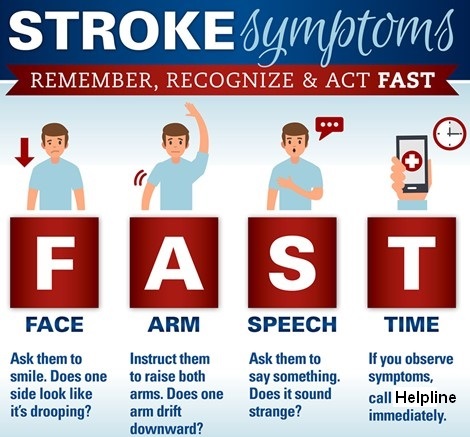
Tips to keep our brain healthy13,42,47-50;
- Challenge the brain: Recall what you did the previous day or weekend; take a new route to your own home or a familiar location; learn a new language, sport, art, music, or any skill; do mental calculations without the aid of a calculator, swap TV with mind games, puzzles, or a book, or play games like bridge and chess that involve memory and thinking ahead. Involve yourself in any social or group activity; studies suggest those with the most social interaction in the community experience the slowest rate of mental decline.
- Reduce the risks: Make ‘safety’ your priority, prevent falls and injuries by using protective gears, learn to manage stress and depression, say No to smoking, drinking, and drugs. As health of arteries and veins is critical for brain health, check BP, heart rate, cholesterol, and sugar regularly. Do not ignore infections.
- Relax and sleep well. Adequate sleep tends to clear abnormal proteins in the brain, consolidates memories, and improves overall memory and brain health.
- Keep in mind that 60% of our brain is made of fats, 50% of which is omega-3 fatty acids crucial for learning and memory. So, as part of an active and healthy life style, rely on a diet rich in antioxidants, vitamins C & E, plant-based foods, whole grains, and healthy fats like flax and chia seeds, avocados, olive oil, and unsalted nuts like walnuts, almonds, and Brazil nut.
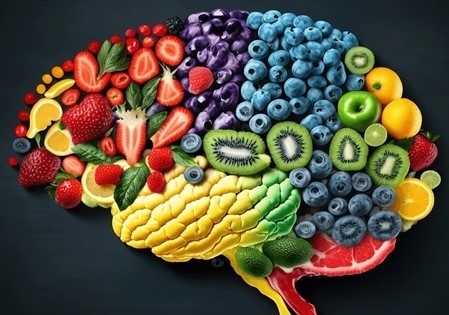
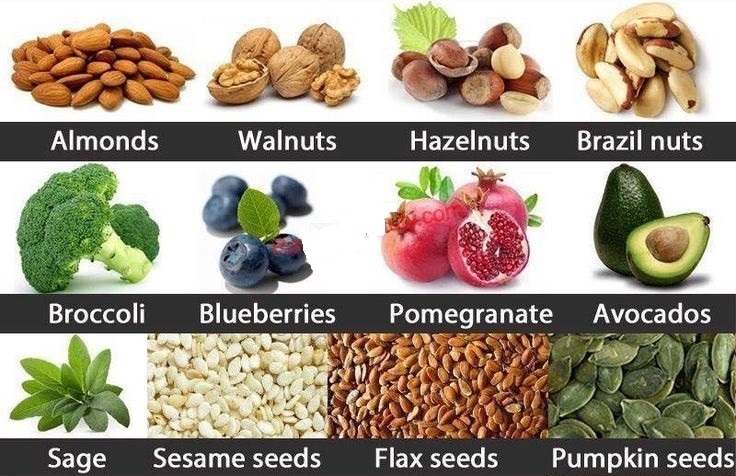
References and Links
- Sathya Sai Speaks, Divine Discourse at Summer course Brindavan, “The Indweller in the Heart”, 28 May 1991, vol 24, chapter 14: https://sssbpt.info/ssspeaks/volume24/sss24-14.pdf
- Know your brain: https://www.ninds.nih.gov/health-information/public-education/brain-basics/brain-basics-know-your-brain
- Nervous system: https://my.clevelandclinic.org/health/body/21202-nervous-system
- Central versus Peripheral: https://www.youtube.com/watch?v=fEix4uFw8qw
- Peripheral nervous system: https://my.clevelandclinic.org/health/body/23123-peripheral-nervous-system-pns
- Brain structure and functions: https://my.clevelandclinic.org/health/body/22638-brain
- Cerebrum: https://my.clevelandclinic.org/health/body/23083-cerebrum
- Pituitary gland: https://my.clevelandclinic.org/health/body/21459-pituitary-gland
- Cerebellum little brain: https://www.medicalnewstoday.com/articles/313265
- Pineal gland: https://my.clevelandclinic.org/health/body/23334-pineal-gland
- Brainstem: https://my.clevelandclinic.org/health/body/21598-brainstem
- Medulla: https://my.clevelandclinic.org/health/body/23001-medulla-oblongata
- Brain disorders: https://brainfoundation.org.au/what-is-brain-disease/
- Degenerative diseases: https://my.clevelandclinic.org/health/diseases/24976-neurodegenerative-diseases
- Dementia: https://www.mayoclinic.org/diseases-conditions/alzheimers-disease/expert-answers/alzheimers-and-dementia-whats-the-difference/faq-20396861
- Alzheimer’s disease: https://www.mayoclinic.org/diseases-conditions/alzheimers-disease/symptoms-causes/syc-20350447
- https://www.alz.org/alzheimers-dementia/difference-between-dementia-and-alzheimer-s
- https://www.alz.org/alzheimers-dementia/10_signs
- https://www.alz.org/alzheimers-dementia/what-is-dementia
- https://www.alz.org/alzheimers-dementia/stages
- Parkinson’s: https://brainfoundation.org.au/disorders/parkinsons-disease/
- https://brainfoundation.org.au/disorders/multiple-sclerosis/
- Neuralgia: https://www.medicalnewstoday.com/articles/325331#symptoms
- Trigeminal: https://www.mayoclinic.org/diseases-conditions/trigeminal-neuralgia/symptoms-causes/syc-20353344
- Muscular dystrophy: https://my.clevelandclinic.org/health/diseases/14128-muscular-dystrophy
- Stroke: https://brainfoundation.org.au/disorders/stroke/
- Paralysis: https://my.clevelandclinic.org/health/diseases/15345-paralysis
- Cerebral palsy: https://brainfoundation.org.au/disorders/cerebral-palsy/
- Epilepsy: https://my.clevelandclinic.org/health/diseases/17636-epilepsy
- https://www.aans.org/patients/conditions-treatments/epilepsy/
- Migraine: https://americanmigrainefoundation.org/resource-library/migraine-and-other-brain-disease/
- Migraine a neuro disorder: https://www.ncbi.nlm.nih.gov/pmc/articles/PMC9506374/
- Health article on headaches: https://news.vibrionics.org/en/articles/282
- Central Vertigo: https://my.clevelandclinic.org/health/symptoms/21769-vertigo
- Vertigo/Meniere’s disease: https://news.vibrionics.org/en/articles/328
- Neuroscience and demo on Effect of chanting on brain: https://www.youtube.com/watch?v=lYLLL17ktTs&t=70
- Ataxia & Apraxia: https://my.clevelandclinic.org/health/symptoms/17748-ataxia
- Dyslexia: https://my.clevelandclinic.org/health/diseases/6005-dyslexia
- Speech: https://my.clevelandclinic.org/health/diseases/21937-speech-impediment
- Stuttering: https://my.clevelandclinic.org/health/diseases/14162-stuttering
- Hydrocephalus: https://my.clevelandclinic.org/health/diseases/17334-hydrocephalus
- Down’s Syndrome: https://my.clevelandclinic.org/health/diseases/17818-down-syndrome
- Brain health: https://brainfoundation.org.au/healthy-brain/
- Act FAST in Stroke: https://www.pennmedicine.org/updates/blogs/neuroscience-blog/2022/march/what-to-do-if-someone-is-having-a-stroke
- BE FAST in Stroke: https://my.clevelandclinic.org/health/diseases/5601-stroke
- First aid in stroke and CPR: https://www.news-medical.net/health/Stroke-First-Aid.aspx
- https://www.redcross.org/take-a-class/resources/learn-first-aid/stroke
- Tips for youthful brain: https://www.health.harvard.edu/mind-and-mood/12-ways-to-keep-your-brain-young
- https://www.mayoclinichealthsystem.org/hometown-health/speaking-of-health/5-tips-to-keep-your-brain-healthy
- https://healthybrains.org/pillars/
2. Camps & Clinics
As a part of our drive to reach out to patients having limited access to healthcare facilities, Sai Vibrionics has started several camps and clinics. Of special mention are the efforts of practitioners from the southern states of India, Andhra Pradesh and Telangana, where during the last two months, four such centres have been inaugurated.
1. Sri Sathya Sai Seva Samithi, BHEL, Hyderabad - on 5 May 2024:
The wellness centre was inaugurated with the efforts of the Samithi convenor, spiritual coordinator and four members, starting with prayers and bhajans. Practitioners 11587&11620 gave an inaugural talk on Sai Vibrionics to the attendees and answered their questions. Practitioners 11568, 11623, 11632, 11667 joined them in treating 45 patients and keeping in mind the extreme hot weather, distributed a remedy for sunstroke to 50 attendees. This centre will operate on 1st Sunday of every month from 10:00 am to 12:30 pm.
2. Dr AS Rao Nagar, Secunderabad - on 13 Jun 2024:
This wellness centre was inaugurated with the support of local Samithi members. Practitioners 11563 & 11627 gave remedies to 9 patients and they will meet fortnightly, every 2nd & 4th Thursday of the month.
3. Sri Shanti Ashram School, Lawson’s Bay Colony, Visakhapatnam - on 15 Jun 2024:
This school has been established to educate children from weaker sections of society and those residing in the slum areas. At the inauguration, Practitioners 11590 & 11650 gave attendees a brief introduction to Sai Vibrionics. From 10:00 am to 12:30 pm, 38 children and 3 staff members were given remedies. The centre will operate monthly on every 2nd Saturday.
4. Eddumailaram village, ODF Samithi, Sangareddy Dist - on 16 Jun 2024:
Sai Samithi of BHEL in Hyderabad started this centre also where Practitioners 11632 & 11620 will treat patients once a month on a day coinciding with village seva conducted by this village Samithi. On the inaugural day, 36 patients were treated from 10.00 am to 2.30 pm; the practitioners were supported by the daughter of Practitioner 11632.


3. From the Diary of Dr Jit K Aggarwal
It was early days. There was no experience, very little knowledge. Record keeping was dismal. There were no guidelines on who should be taught the system. Just a simple promise to use the system for seva and a minimum of 6 persons per class. But what was great was the enthusiasm and total faith in the remedies. Swami’s blessings were in abundance as was evident from the results which were phenomenal. Here is one such incidence that happened in 1995.
A peace personified monk visited a Practitioner living in a remote place and showed the dark circles around his eyes and enquired if she had a remedy for this. She made him sit, prepared a remedy and initiated the first dose in his mouth. Instead of walking away soon after, he hesitatingly sat with a request in all humility to allow him to wait there for two hours as otherwise he would have to wait in the nearby ill-equipped railway station to catch the next train scheduled to leave soon after. He sat there quietly and when it was time to leave, he thanked her immensely. To her utter amazement she suddenly noticed no trace of dark circles around his eyes which she had seen clearly two hours ago! This incident haunted her for long and then she sought clarification from Dr Aggarwal and he in turn prayed to Swami and innerly asked as to how can this kind of a miracle happen. Swami’s response was immediate and clear “purity of mind”. The monk was so pure that a single dose promptly did the trick.
This was a deeper lesson than all the satsangs on purity of mind which is nothing but our thoughts. This revealed an invaluable aspect of healing hidden within us!
4. In Memoriam
Mrs Munira Banatwala 02641…India, fondly called ‘aunty’ in SSSSO circles, passed away peacefully on 26 May 2024 at her home surrounded by her loving family at the age of 88 years. An ardent devotee of Swami, she carried on seva activities till her last moment. She lived life in the service of humanity, especially educating girls. She became a vibrionics practitioner in 2004 and she had been conducting vibrionics camps regularly in Versova, Mumbai, for the past 13 years. Ever ready to help, with a smile on her face, she served patients with love, compassion, and concern. She was always enthusiastic to learn the latest advancements in Vibrionics, never missed a meeting and was always a first bencher. Her patients, co-practitioners, vibrionics fraternity at large and all the beneficiaries will sorely miss her, an epitome of love and benevolence.
We are very sad to announce the loss of a very senior practitioner Simon Jeremy Wade 02766…UK on 7 June 2024. He and his wife were on a holiday when he had a bad fall in the bathroom, soon became unconscious and passed away at the age of 80 years. He and his wife Sylvia Wade 02707, have been practising together for over two decades with lots of dedication. Simon was a very enthusiastic practitioner, always keen to enhance his knowledge and progress on the spiritual path. May his good soul merge in Swami’s infinite love and we pray that He gives his wife and family strength to bear the sudden loss.

